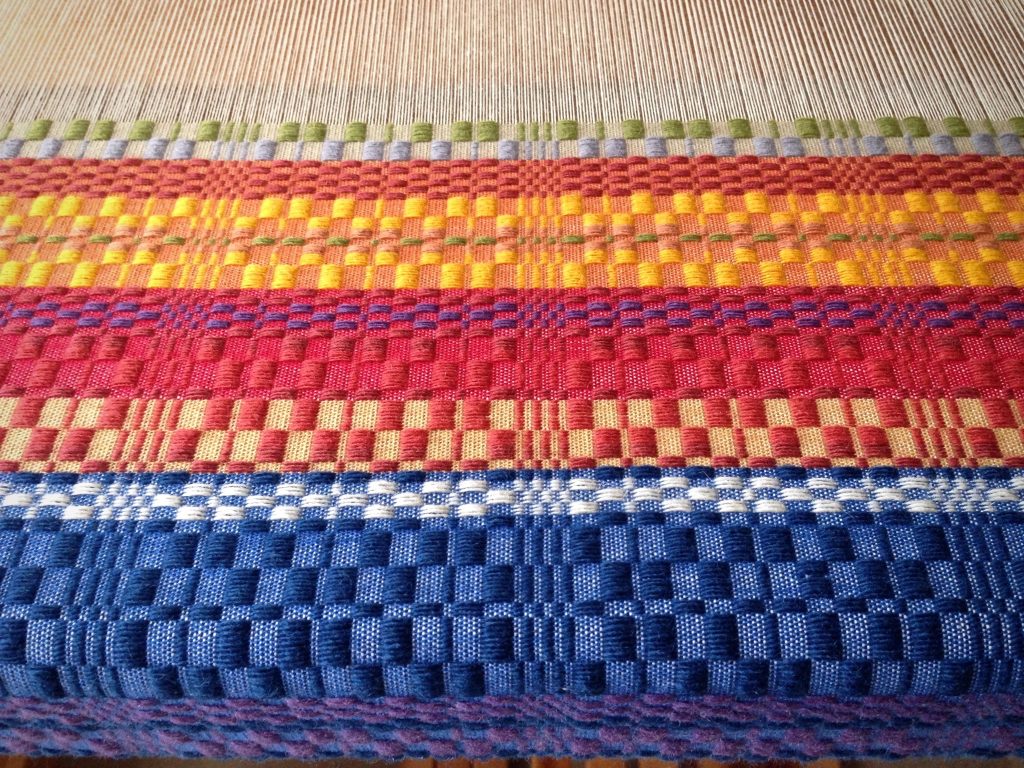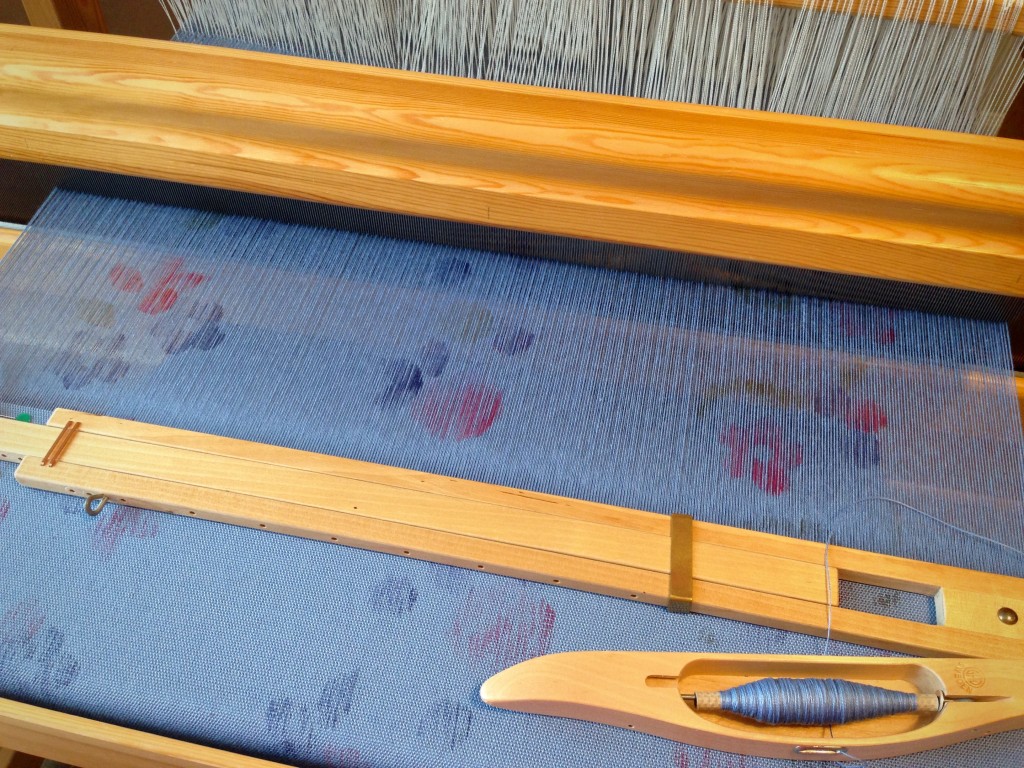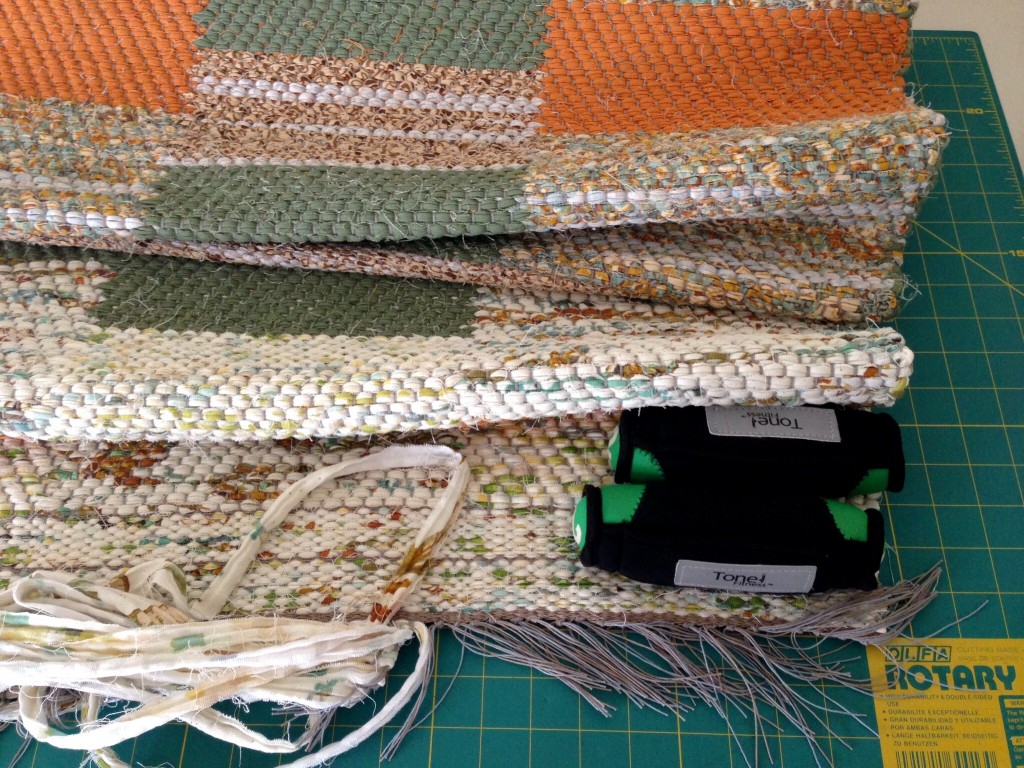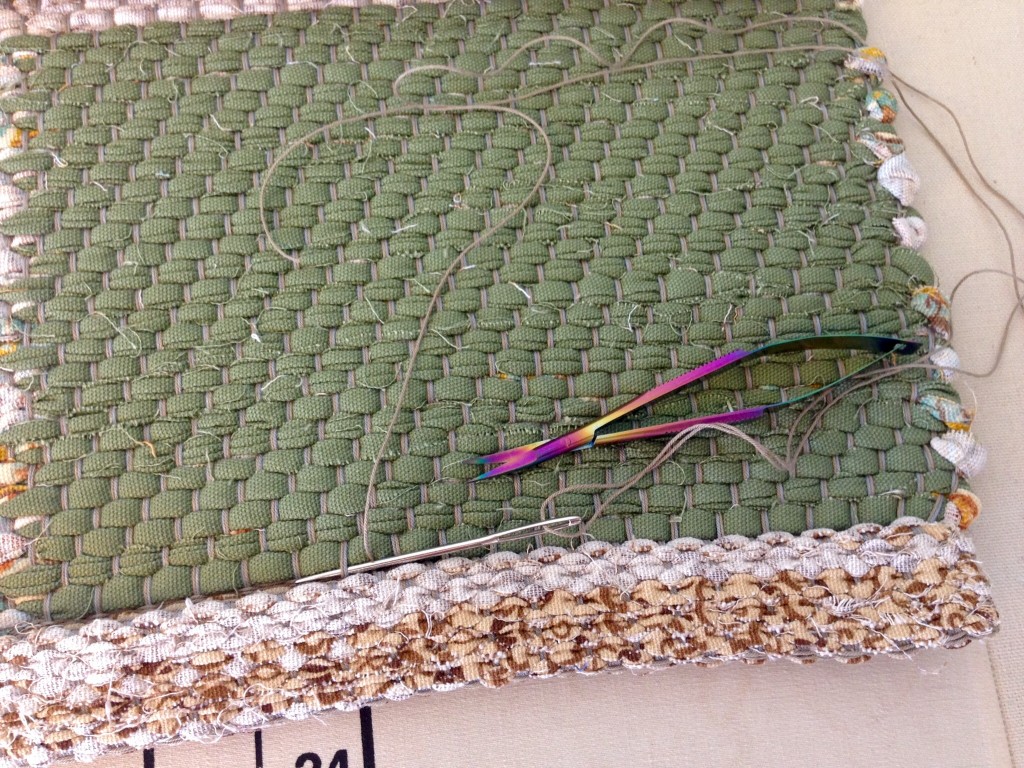Halfway is a milestone when you are threading 2,064 ends. This double weave in two blocks has threading such that I can listen to podcasts without losing my place. It’s a long stretch to the halfway point.
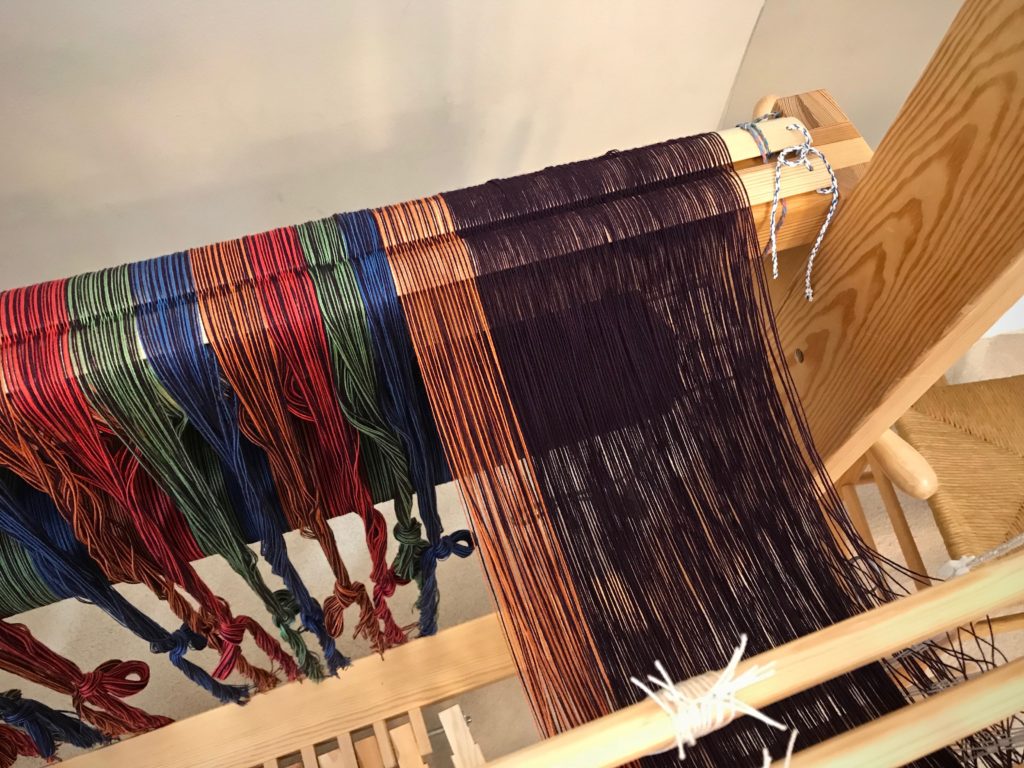
Before threading, I find the center of the warp and the group of ends that are just past center. I drape those ends on the back beam to mark the spot.
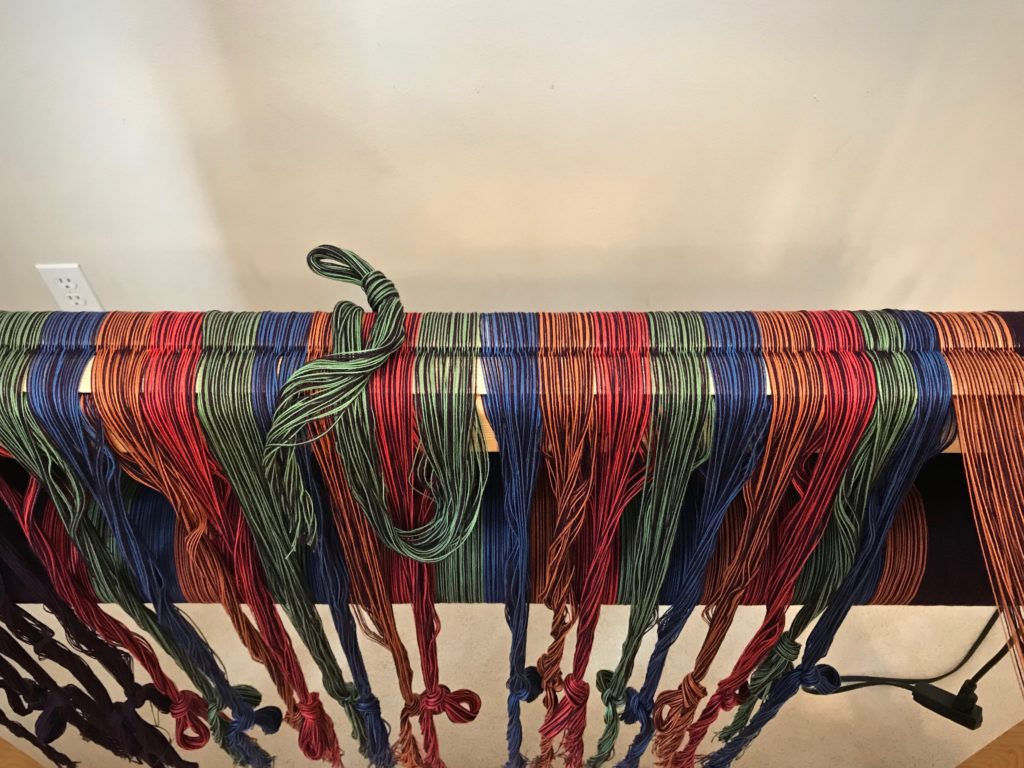
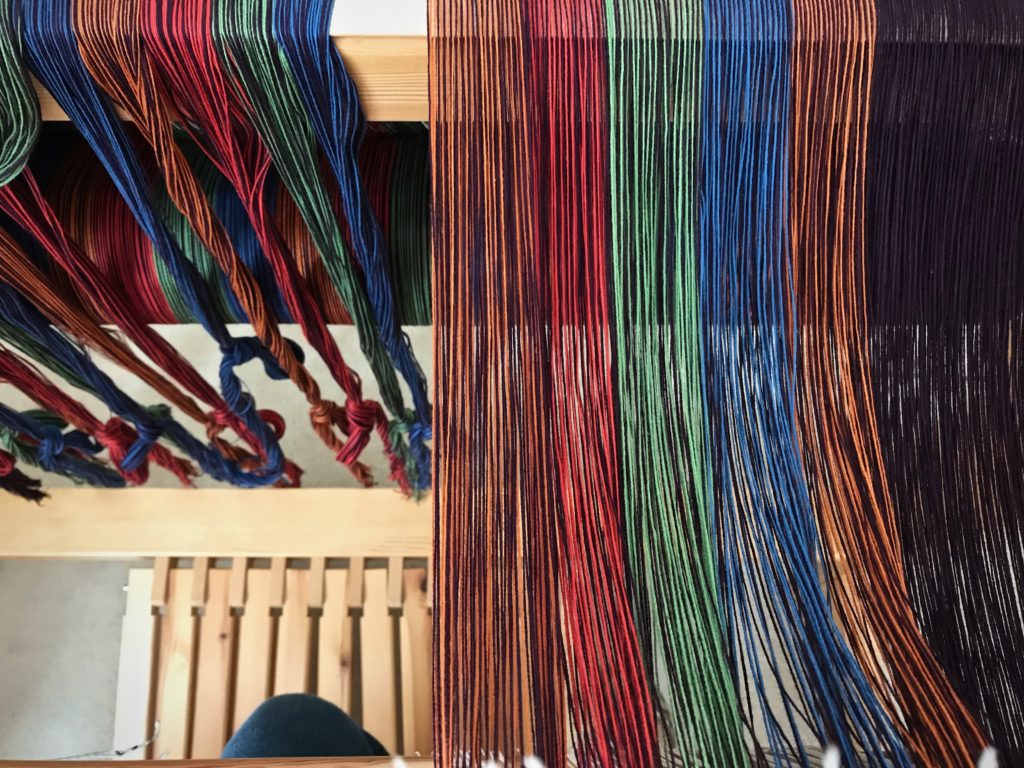
I’m excited to reach halfway in the threading! It’s a turning point. Now, while they are readily accessible, I position all of the shaft-to-lamm cords to hang down, right at the center of the warp where they belong.
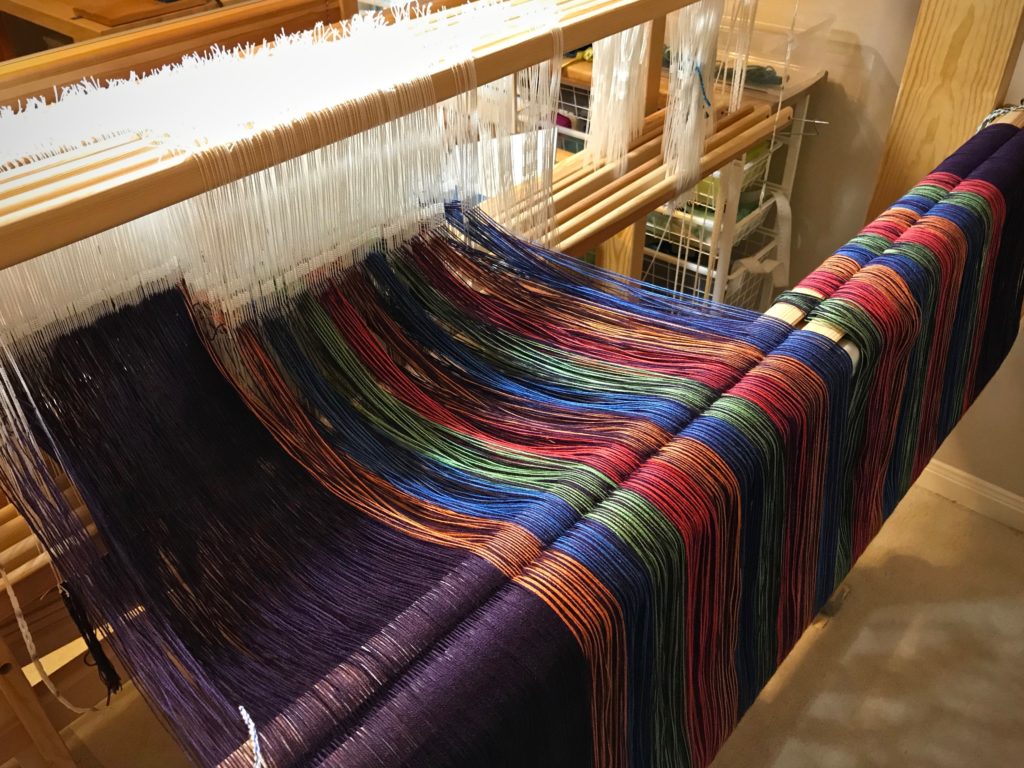
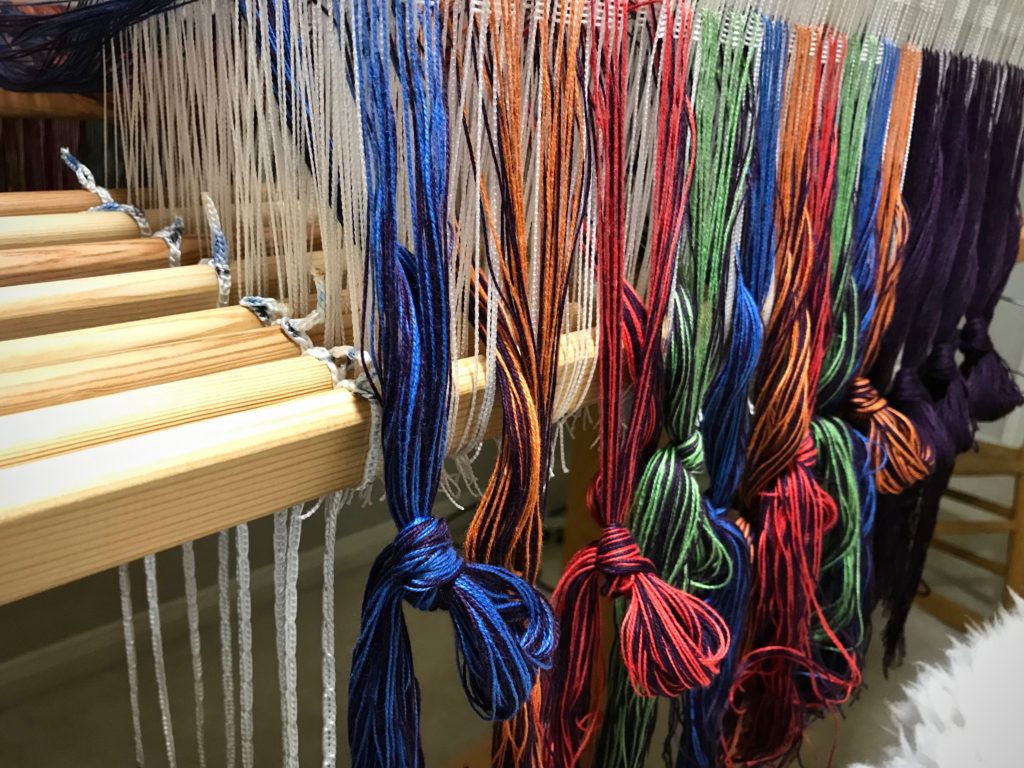
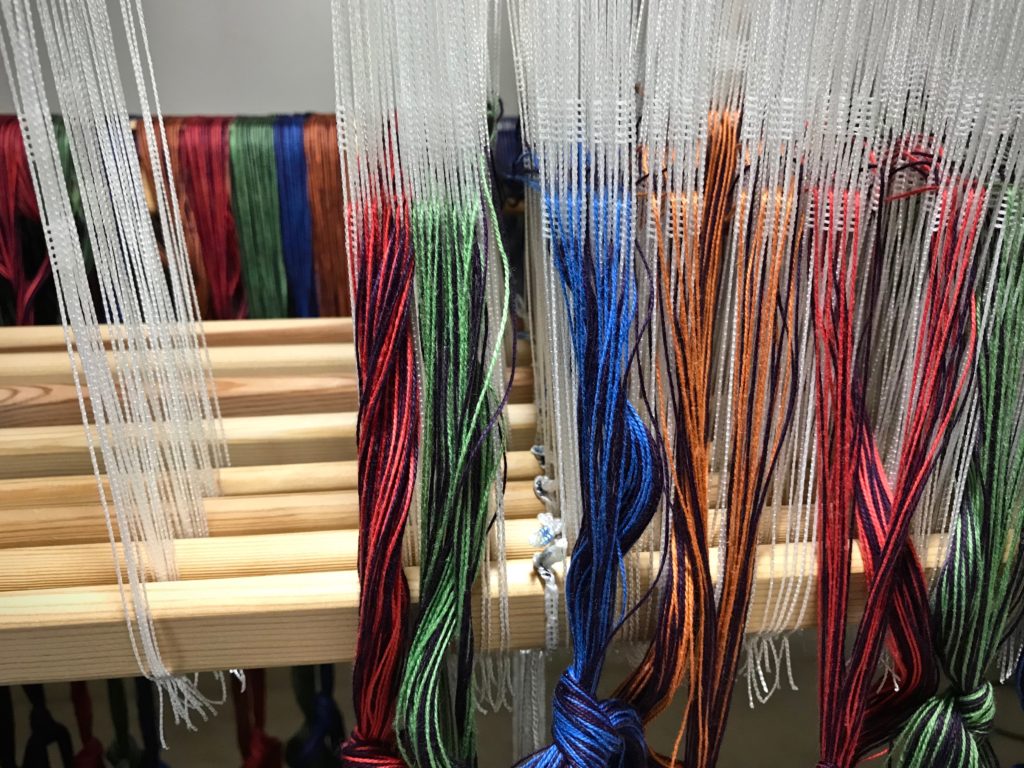
Have you ever reached a turning point in life, and knew it was time to position things? We try to be good and loving. But we’re never as good as we think. And we end up loving only the people we want to love. We have been separated from God. Our misdeeds push us away from him. Easter is resurrection, but before that is the cross of Christ. God so loved us that he closed the separation between us and him with the cross. That’s the turning point he offers to us, to set things right. Our part is to believe.
May you look forward to the second half.
With you,
Karen

